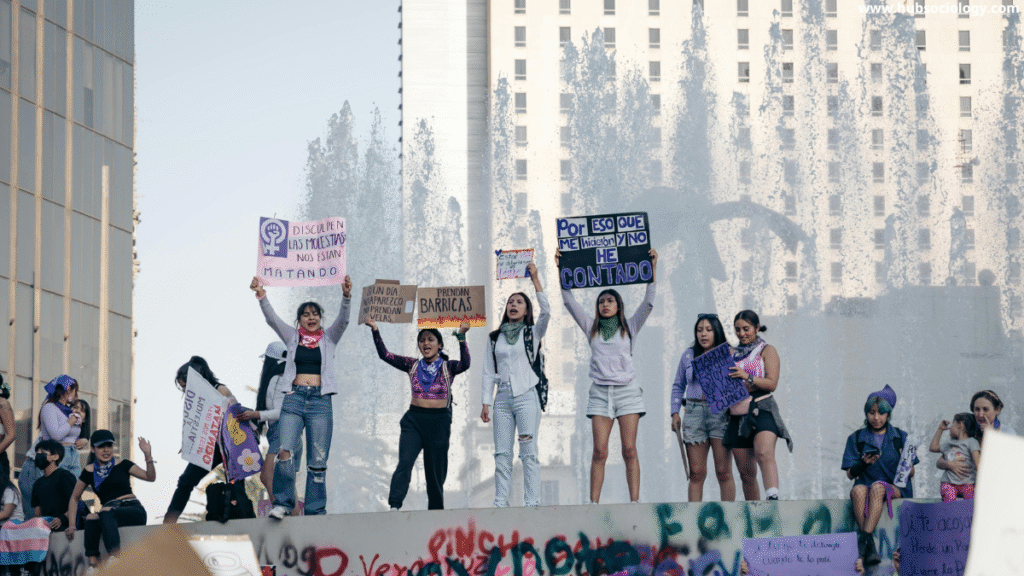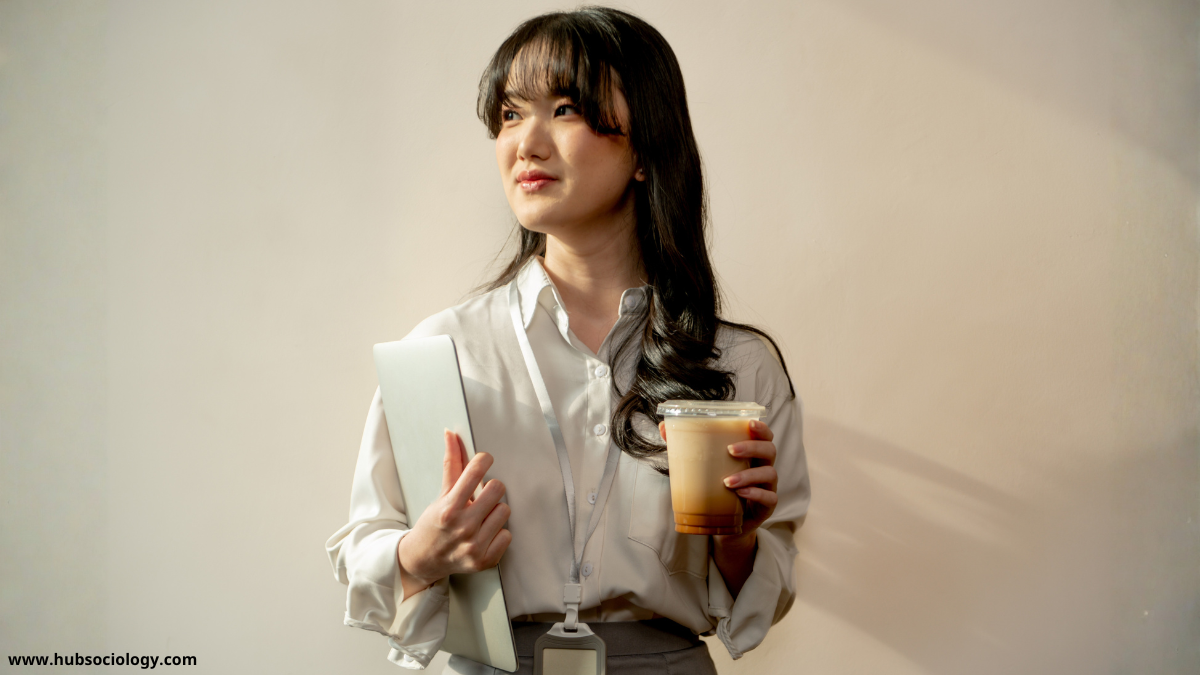Introduction on Gender Equality in South Korea
Gender equality has become a defining issue in South Korea’s social development over the past few decades. Once a deeply patriarchal society rooted in Confucian traditions, South Korea has witnessed substantial progress in women’s rights, education, and participation in the workforce. However, despite these advancements, gender inequality persists in various forms — from wage gaps and glass ceilings to societal expectations and online misogyny. The sociological analysis of gender equality in South Korea reveals not only the structural transformations taking place but also the enduring cultural and institutional barriers that slow the pace of change.
This article examines gender equality in South Korea through a sociological lens — analyzing the historical roots of gender roles, institutional developments, cultural resistance, and ongoing challenges in achieving a more equitable society.

Table of Contents on Gender Equality in South Korea
Historical and Cultural Foundations of Gender Roles
South Korea’s social structure has long been influenced by Confucianism, which emphasizes hierarchy, filial piety, and male dominance. Traditional Confucian ideals assigned men to the public sphere — as breadwinners, leaders, and decision-makers — while women were confined to the private sphere, tasked with domestic duties and childrearing. The proverb “Namjon Yubi” (남존여비), meaning “men are honored and women are lowly,” reflects this historical bias.
During the Joseon Dynasty (1392–1897), women’s rights were severely limited. Women were expected to uphold family honor through chastity and obedience, and inheritance laws favored male heirs. Even after modernization and Japanese colonization (1910–1945), these patriarchal norms remained deeply ingrained in Korean society.
Post-war industrialization in the 1960s brought South Korea rapid economic growth but did little to dismantle gender hierarchies. Women entered factories and offices, yet they were seen as temporary workers whose ultimate role was still domestic. Thus, gender inequality was structurally embedded in both the economy and culture.
From a sociological perspective, this gender order can be understood through Talcott Parsons’ functionalist theory, which views gender roles as complementary functions necessary for social stability. However, South Korea’s modernization and women’s increasing education level have challenged this equilibrium, generating what sociologists describe as “role strain” and “cultural lag”—where traditional gender expectations conflict with modern egalitarian aspirations.
Education and the Empowerment of Women
Education has played a transformative role in advancing gender equality in South Korea. Following democratization in the 1980s, access to education expanded significantly for women. Today, South Korean women are among the most educated in the world — with higher university enrollment rates than men.
According to the OECD, more than 75% of young South Korean women have completed tertiary education. This remarkable achievement reflects the country’s commitment to equal educational opportunity. Sociologically, this can be analyzed through Pierre Bourdieu’s concept of cultural capital, as education empowers women to accumulate skills, credentials, and social recognition necessary for upward mobility.
However, the paradox lies in the education-to-employment transition. Despite high educational attainment, women remain underrepresented in leadership positions and high-paying sectors. The discrepancy between education and workforce participation highlights the persistence of structural discrimination and gender stratification, where societal systems rank genders unequally in terms of access to power and resources.
Women in the Workforce: Opportunities and Inequalities
South Korea’s economic transformation — known as the “Miracle on the Han River” — relied heavily on disciplined labor, yet gender equality in employment has been uneven. Women make up nearly half of the workforce but are concentrated in low-paying, non-regular, or part-time jobs.
The gender wage gap remains one of the highest in the OECD — as of 2023, women earn approximately 31% less than men on average. Women’s career progression is also hindered by the “glass ceiling,” a metaphor for the invisible barriers preventing women from reaching senior positions. Only around 6% of executives in major South Korean firms are women, reflecting deep institutional inequality.
From a sociological standpoint, this can be examined through feminist theories of patriarchy and capitalism. Heidi Hartmann’s dual-systems theory argues that patriarchy and capitalism work together to exploit women’s labor — capitalism benefits from women’s low-paid work, while patriarchy ensures male dominance in leadership roles. In South Korea, corporate culture often reinforces gender hierarchies through long working hours, male bonding traditions (such as after-work drinking), and expectations of women to prioritize family over career.
Government policies such as maternity leave, childcare subsidies, and affirmative action in public employment have sought to close the gender gap. Yet, workplace discrimination and the stigma around maternity persist. Women often face career setbacks after childbirth, leading to the so-called “M-curve” phenomenon, where women’s labor participation drops sharply during childbearing years and rises again later.
Political Participation and Representation

South Korea’s journey toward gender equality is also visible in politics, albeit gradually. The 1987 democratization movement opened opportunities for women to enter political life, and feminist organizations such as the Korean Women’s Association United (KWAU) played pivotal roles in advocating for gender-based reforms.
In 2001, South Korea established the Ministry of Gender Equality and Family (MOGEF), signaling institutional commitment to women’s rights. Yet, the representation of women in political decision-making remains modest. As of 2024, women hold only about 19% of National Assembly seats, which is below the global average.
Sociologically, this reflects structural power inequalities and symbolic violence (a term by Pierre Bourdieu) — the subtle normalization of male dominance that discourages women from aspiring to leadership. Moreover, South Korea’s political discourse often trivializes feminist concerns, framing them as divisive or radical, especially among conservative and younger male populations.
The election of Park Geun-hye in 2012 as South Korea’s first female president was seen as a milestone. However, her impeachment in 2017 — amid corruption scandals — polarized public opinion and reignited debates about gender, power, and political ethics. Feminist scholars argue that her downfall revealed how gendered stereotypes still influence perceptions of female leadership.
Feminist Movements and Cultural Resistance
The rise of feminist activism in South Korea has been one of the most significant sociocultural phenomena of the 21st century. Movements like #MeToo and “Escape the Corset” (a protest against beauty standards) have sparked national conversations about patriarchy, sexual violence, and gender norms.
The #MeToo movement, which began globally in 2017, gained momentum in South Korea after a prosecutor publicly accused a superior of sexual harassment in 2018. The case inspired many women — including actresses, journalists, and students — to come forward with their experiences. This led to criminal convictions of several powerful men and increased awareness about workplace harassment.
The “Escape the Corset” movement challenged Korea’s obsession with women’s appearance — where beauty ideals are rigidly defined through cosmetic surgery, makeup, and fashion. Participants symbolically cut their hair short and stopped wearing makeup to protest the commodification of female bodies.
Despite these achievements, feminist activism faces strong backlash from anti-feminist groups. Some young men argue that gender policies unfairly favor women and threaten men’s opportunities, particularly in a competitive job market. Online spaces have become battlegrounds where cyber misogyny and gender-based hate speech are rampant. This digital gender war reflects what sociologists call “hegemonic masculinity” (R.W. Connell) — the dominant cultural ideal of manhood that sustains male privilege through social and symbolic control.
Family, Marriage, and Changing Gender Norms
Traditional gender roles are also being redefined within the family structure. South Korea’s fertility rate — the world’s lowest at 0.7 births per woman (2024) — is both a symptom and a cause of changing gender relations. Many young women reject marriage and motherhood due to economic insecurity, gender inequality, and lack of work-life balance.
Sociologically, this can be analyzed through Anthony Giddens’ theory of reflexive modernity, which suggests that in modern societies, individuals increasingly make life choices based on personal fulfillment rather than traditional obligations. South Korean women, empowered by education and global awareness, are questioning the patriarchal family model and choosing independence.
Government campaigns encouraging childbirth often fail because they overlook the gendered burden of unpaid care work. Despite women’s entry into the workforce, domestic labor remains largely their responsibility, creating what sociologists call the “double burden” — balancing employment with housework.
The shift toward delayed marriage, low fertility, and single-person households signals a post-traditional transformation of gender relations. However, it also raises policy challenges related to population decline and aging, forcing South Korea to reconcile feminist ideals with demographic realities.
Media, Pop Culture, and Gender Representation
South Korean media and entertainment — especially K-dramas, K-pop, and digital platforms — play dual roles in shaping gender perceptions. On one hand, they challenge stereotypes by portraying strong, independent female characters and promoting gender diversity. On the other, they perpetuate unrealistic beauty standards and reinforce gender binaries.
For instance, K-pop idols often face rigid gender expectations — female idols are pressured to embody innocence and beauty, while male idols balance masculinity with aesthetic perfection. The sociological framework of symbolic interactionism helps explain how these media images influence self-identity and social behavior. Individuals internalize media portrayals as symbols of gender norms, shaping how they perceive and perform gender in everyday life.
Recently, there has been an increase in feminist-themed films and dramas, such as Kim Ji-young, Born 1982, which sparked national debate on sexism and gender discrimination. The public reaction to such works reveals how media becomes a site of ideological struggle between progressive and conservative values.
Institutional Reforms and Policy Initiatives
Over the past two decades, South Korea has introduced numerous legal and institutional reforms to promote gender equality. Key legislations include:
- The Equal Employment Act (1987) – prohibiting gender discrimination at work.
- The Framework Act on Gender Equality (2015) – ensuring gender mainstreaming in policymaking.
- The Sexual Violence Punishment Act – addressing harassment and digital sex crimes.
The Ministry of Gender Equality and Family (MOGEF) oversees these efforts, focusing on women’s empowerment, family welfare, and gender education. However, the ministry itself faces political opposition, particularly from conservative factions who see it as unnecessary or biased.
Despite progress, implementation remains inconsistent. Gender sensitivity in law enforcement, corporate accountability, and education still lags. Many feminist scholars argue that gender equality in South Korea is more institutional than cultural, meaning laws exist but attitudes are slow to change.
The Road Ahead: Challenges and Prospects
South Korea stands at a crossroads between tradition and transformation. On one hand, it has achieved remarkable progress — women’s education, activism, and awareness are at historic highs. On the other, structural and cultural inequalities persist.
The key sociological challenges include:
- Workplace Inequality: Persistent wage gaps and occupational segregation.
- Cultural Backlash: Growing anti-feminism and online misogyny.
- Family Policy Reform: Addressing the unequal division of domestic labor.
- Representation Gap: Increasing women’s participation in politics and leadership.
- Media Stereotypes: Encouraging gender-sensitive portrayals in popular culture.
Future progress depends on cultural transformation, not just legislation. Sociological theories such as structural functionalism, feminist theory, and social constructionism all point to the need for redefining gender as a social process — shaped by institutions, interactions, and symbols.
Ultimately, achieving genuine gender equality in South Korea requires dismantling deep-rooted patriarchal norms and fostering a new gender culture based on inclusivity, mutual respect, and shared responsibility.
Conclusion on Gender Equality in South Korea
Gender equality in South Korea reflects a complex interplay of progress and resistance. Sociologically, it exemplifies how modernization, globalization, and feminist movements challenge traditional structures while facing counterforces from conservative culture. The country’s rapid transformation has created both opportunities and tensions — between equality in law and inequality in life.

South Korea’s journey is far from over. The path toward a truly egalitarian society lies in embracing cultural change alongside institutional reform — empowering both women and men to redefine gender roles in ways that reflect the ideals of a just, modern, and inclusive society.
Do you like this this Article ? You Can follow as on :-
Facebook – https://www.facebook.com/hubsociology
Whatsapp Channel – https://whatsapp.com/channel/0029Vb6D8vGKWEKpJpu5QP0O
Gmail – hubsociology@gmail.com
15 FAQs on Gender Equality in South Korea
1. What is the current status of Gender Equality in South Korea?
Gender Equality in South Korea has improved significantly in education and law, but inequality remains in employment, politics, and cultural attitudes. Women’s education levels are among the highest in the world, yet wage gaps and limited representation persist.
2. How has Confucianism influenced Gender Equality in South Korea?
Confucianism historically emphasized patriarchal family structures and male dominance, limiting women’s roles to domestic spheres. These traditional values still influence gender expectations and hinder full gender equality in South Korea.
3. What are the main laws promoting Gender Equality in South Korea?
Major laws include the Equal Employment Act (1987), the Framework Act on Gender Equality (2015), and the Act on the Punishment of Sexual Crimes and Protection of Victims. These laws aim to ensure fair treatment, prevent discrimination, and protect women’s rights.
4. What role does the Ministry of Gender Equality and Family play?
The Ministry of Gender Equality and Family (MOGEF) oversees policies related to women’s empowerment, family welfare, and gender mainstreaming in government programs, playing a key role in advancing Gender Equality in South Korea.
5. How big is the gender wage gap in South Korea?
South Korea has one of the largest gender wage gaps among OECD countries — women earn roughly 31% less than men on average, reflecting occupational segregation and limited promotion opportunities.
6. What progress has been made in women’s education in South Korea?
Women’s education has seen remarkable progress. Over 75% of young South Korean women now have tertiary education, often surpassing men. However, this has not yet translated into equal professional opportunities.
7. How are women represented in South Korean politics?
As of 2024, women hold around 19% of National Assembly seats, which is below the global average. Gender Equality in South Korea’s political system is improving but still limited by cultural and institutional barriers.
8. What challenges do South Korean women face in the workplace?
Women face barriers like long working hours, discrimination after childbirth, and limited access to senior positions. Many women leave work during childbearing years, creating the so-called “M-curve” in employment.
9. How has the #MeToo movement impacted Gender Equality in South Korea?
The #MeToo movement in South Korea exposed sexual harassment in politics, entertainment, and academia. It strengthened feminist activism and raised public awareness about gender violence and inequality.
10. What is the “Escape the Corset” movement?
The “Escape the Corset” movement is a feminist campaign where women reject beauty standards by cutting hair short and avoiding makeup. It symbolizes resistance against societal pressures on women’s appearance and challenges gender norms.
11. How does South Korea’s low birth rate relate to Gender Equality?
Many women avoid marriage and motherhood due to unequal domestic responsibilities and lack of work-life balance. The world’s lowest fertility rate in South Korea reflects growing discontent with gender inequality in family roles.
12. What role does K-pop and media play in shaping Gender Equality in South Korea?
K-pop and media both challenge and reinforce gender stereotypes. While some dramas promote strong female leads, beauty standards and gendered marketing often perpetuate traditional roles, influencing social perceptions of gender.
13. Is there a generational divide regarding Gender Equality in South Korea?
Yes. Younger women increasingly support feminism, while some young men view gender policies as biased. This gender conflict reflects differing experiences of economic pressure, social change, and identity in modern Korea.
14. What are the biggest obstacles to achieving Gender Equality in South Korea?
Persistent patriarchy, workplace discrimination, cultural backlash, and digital misogyny are major obstacles. Achieving full Gender Equality in South Korea requires deep cultural transformation alongside legal reforms.
15. What is the future outlook for Gender Equality in South Korea?
The future of Gender Equality in South Korea depends on sustained feminist activism, government policy reform, and changing cultural attitudes. As younger generations challenge traditional norms, a more inclusive and balanced society is gradually emerging.
